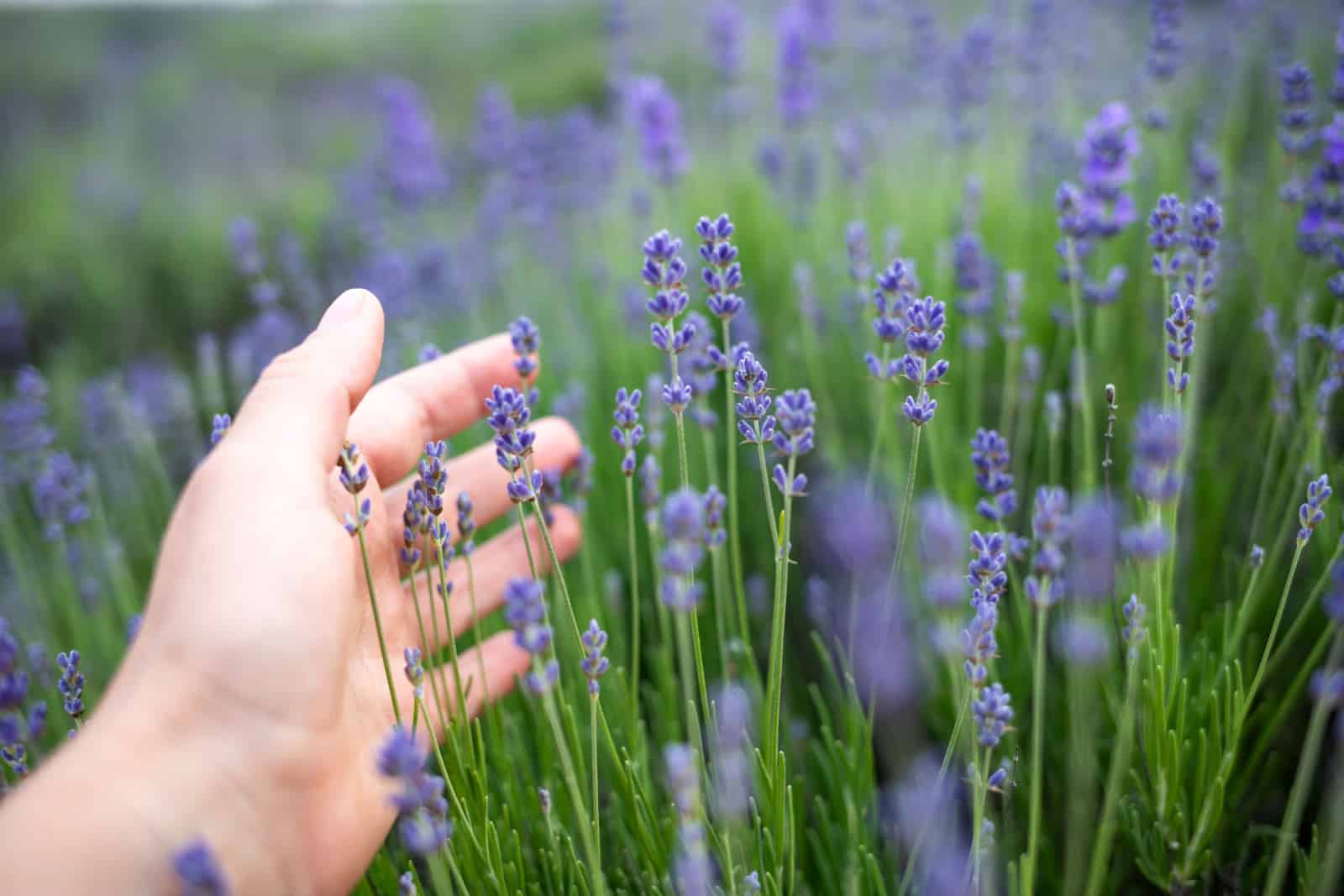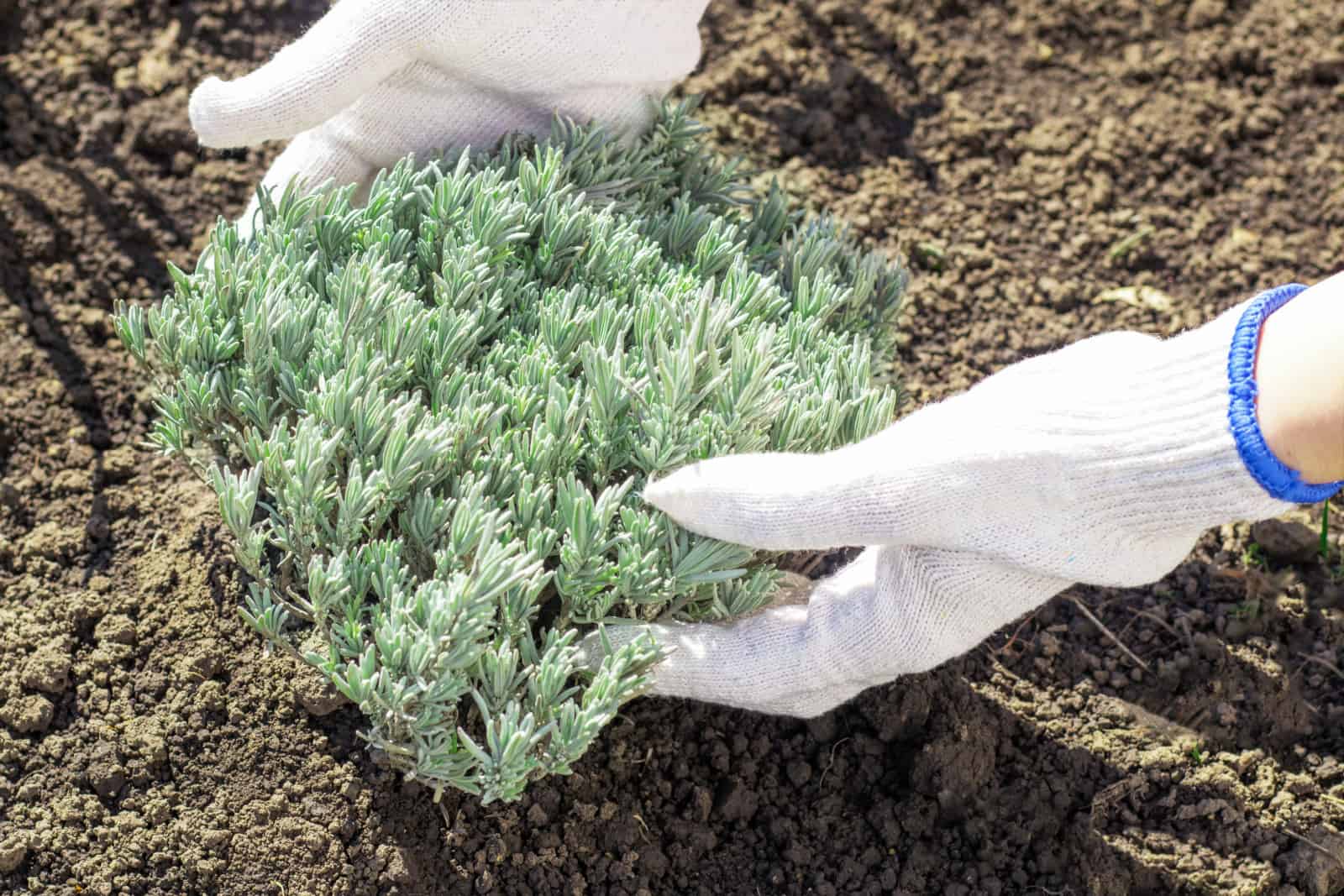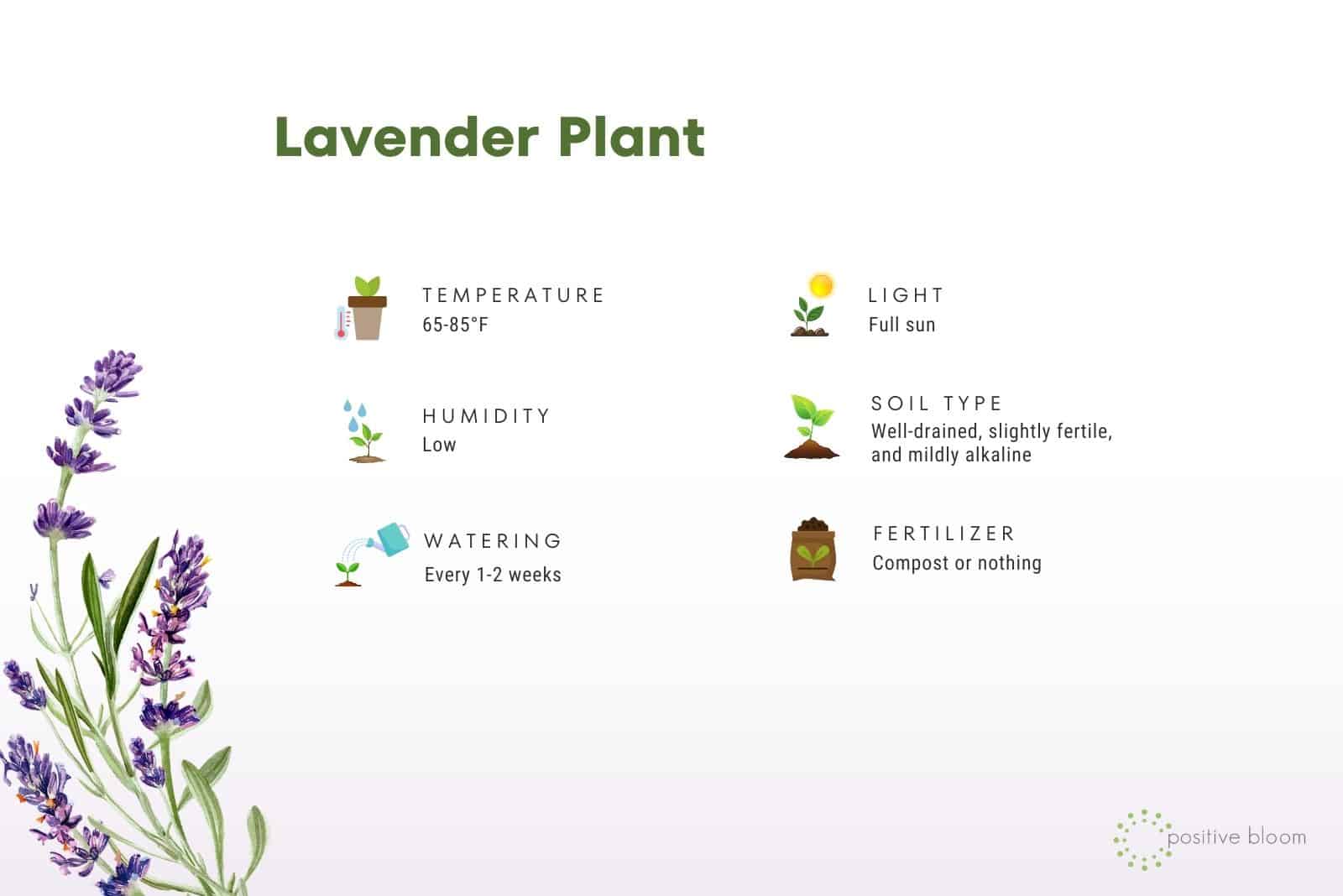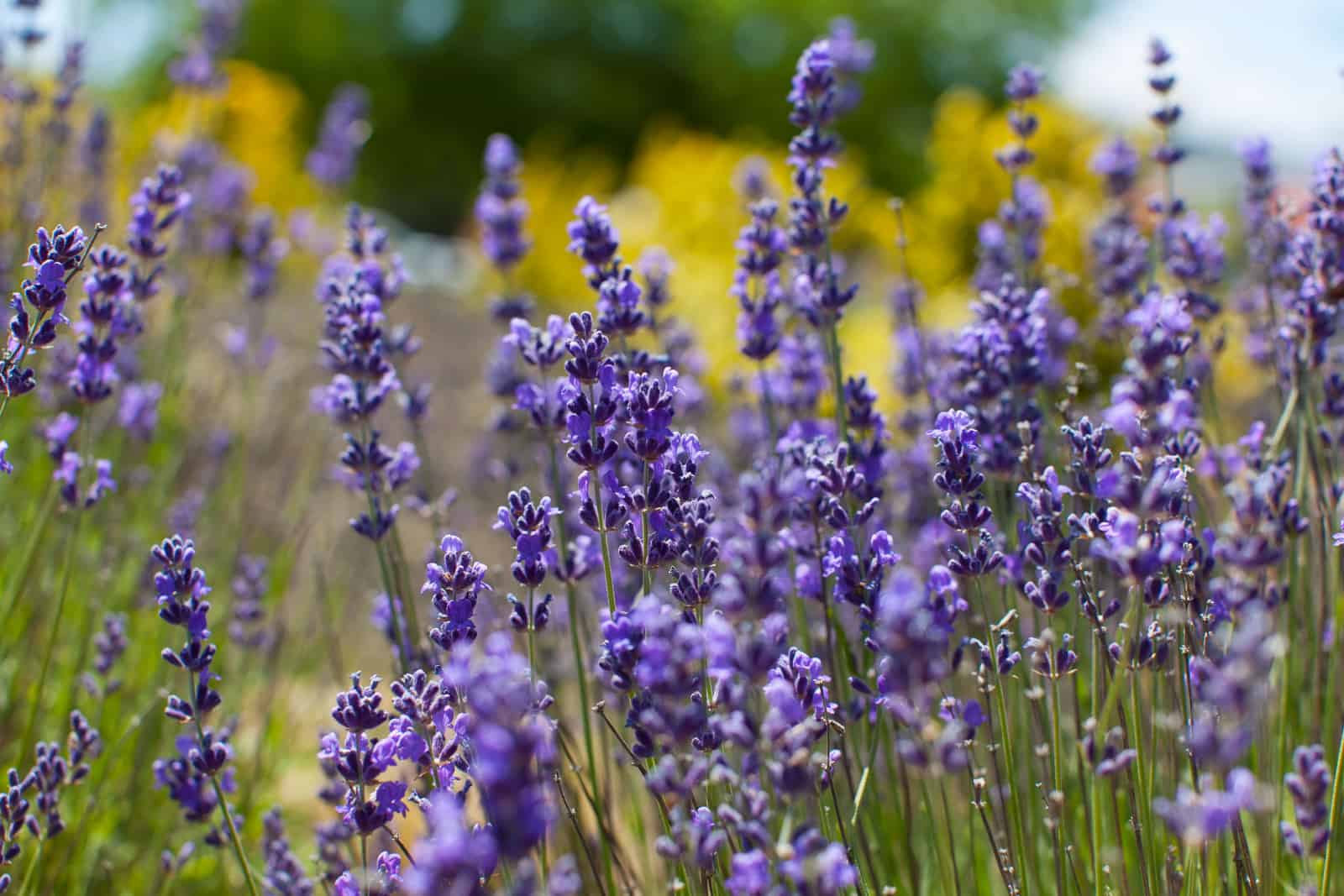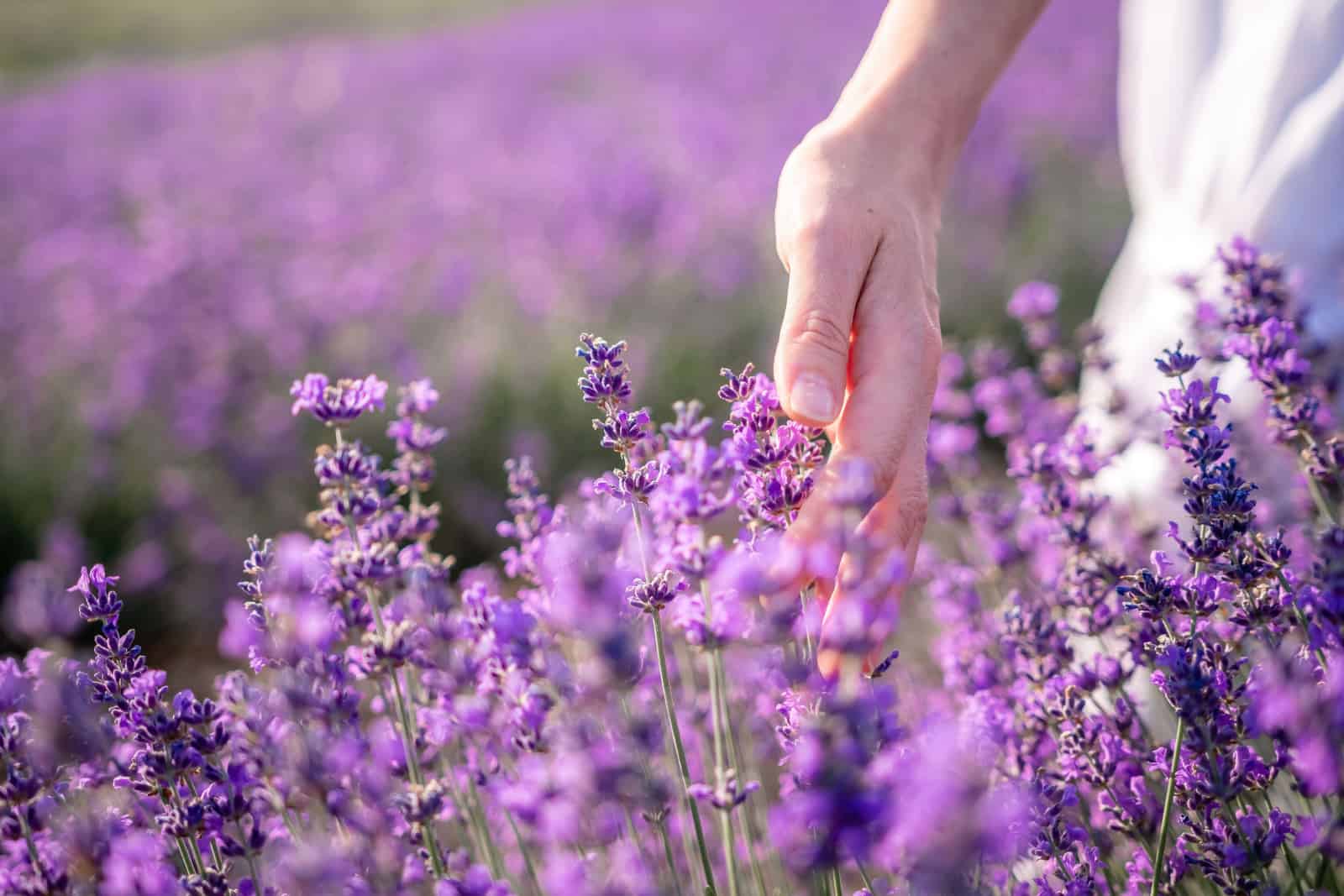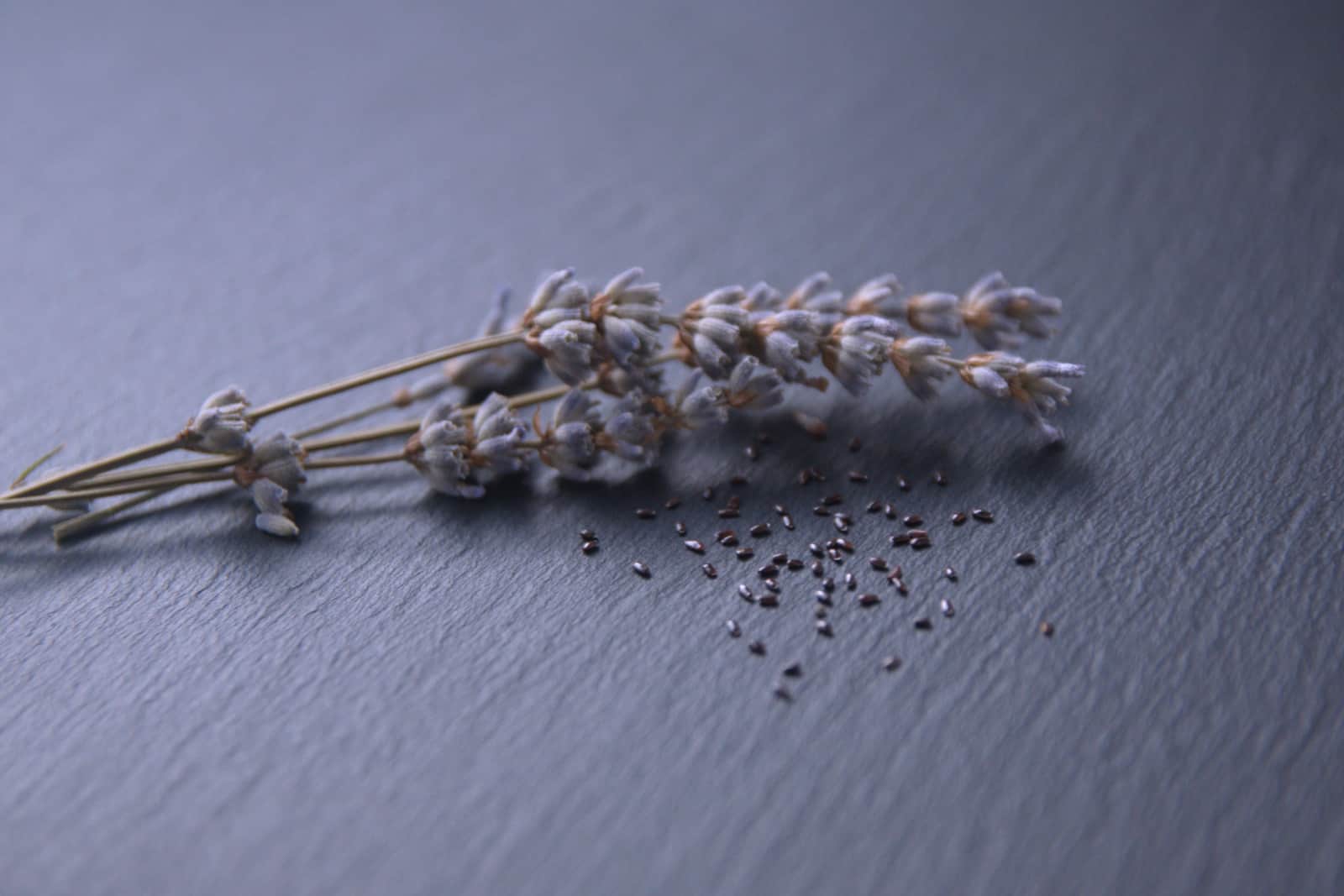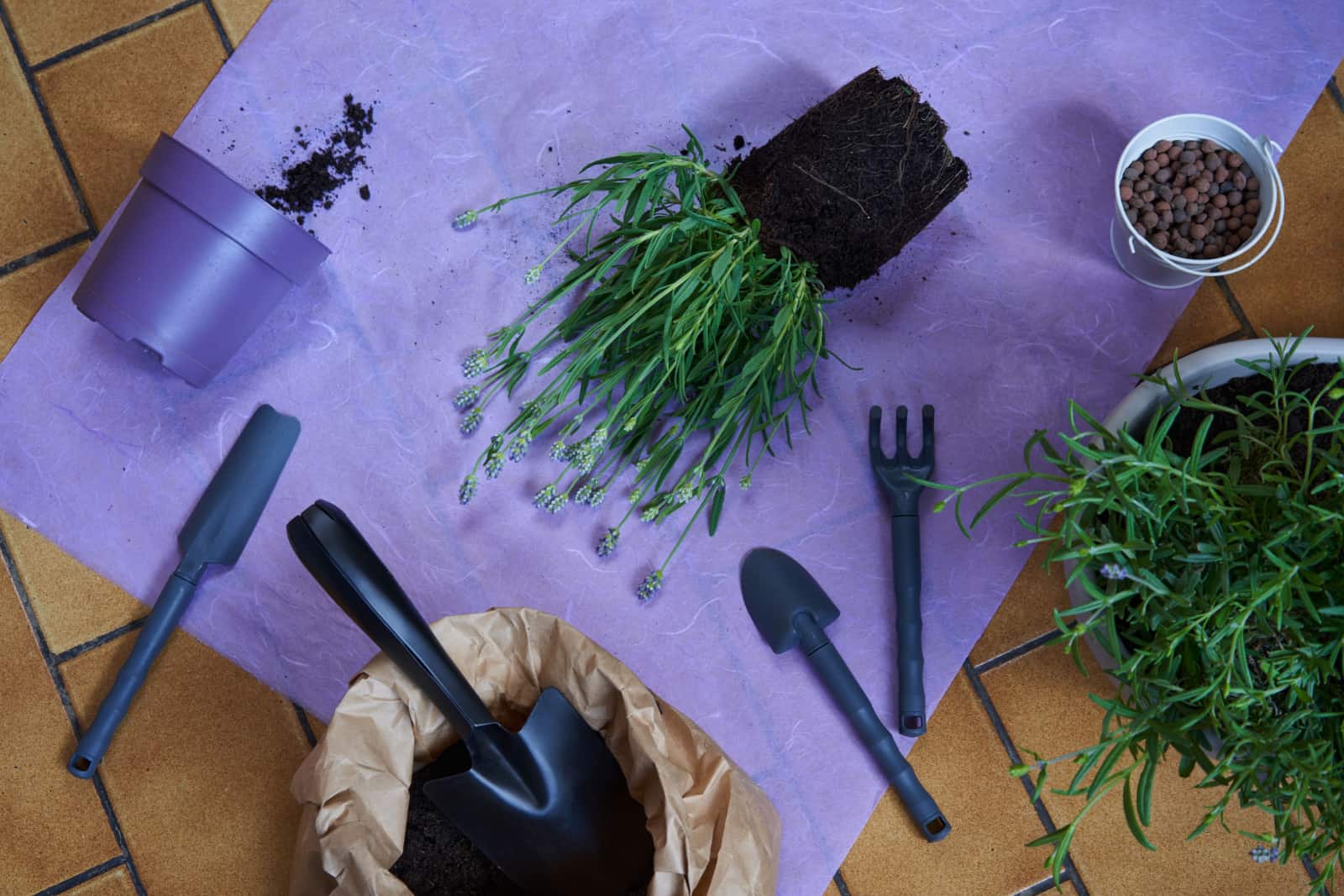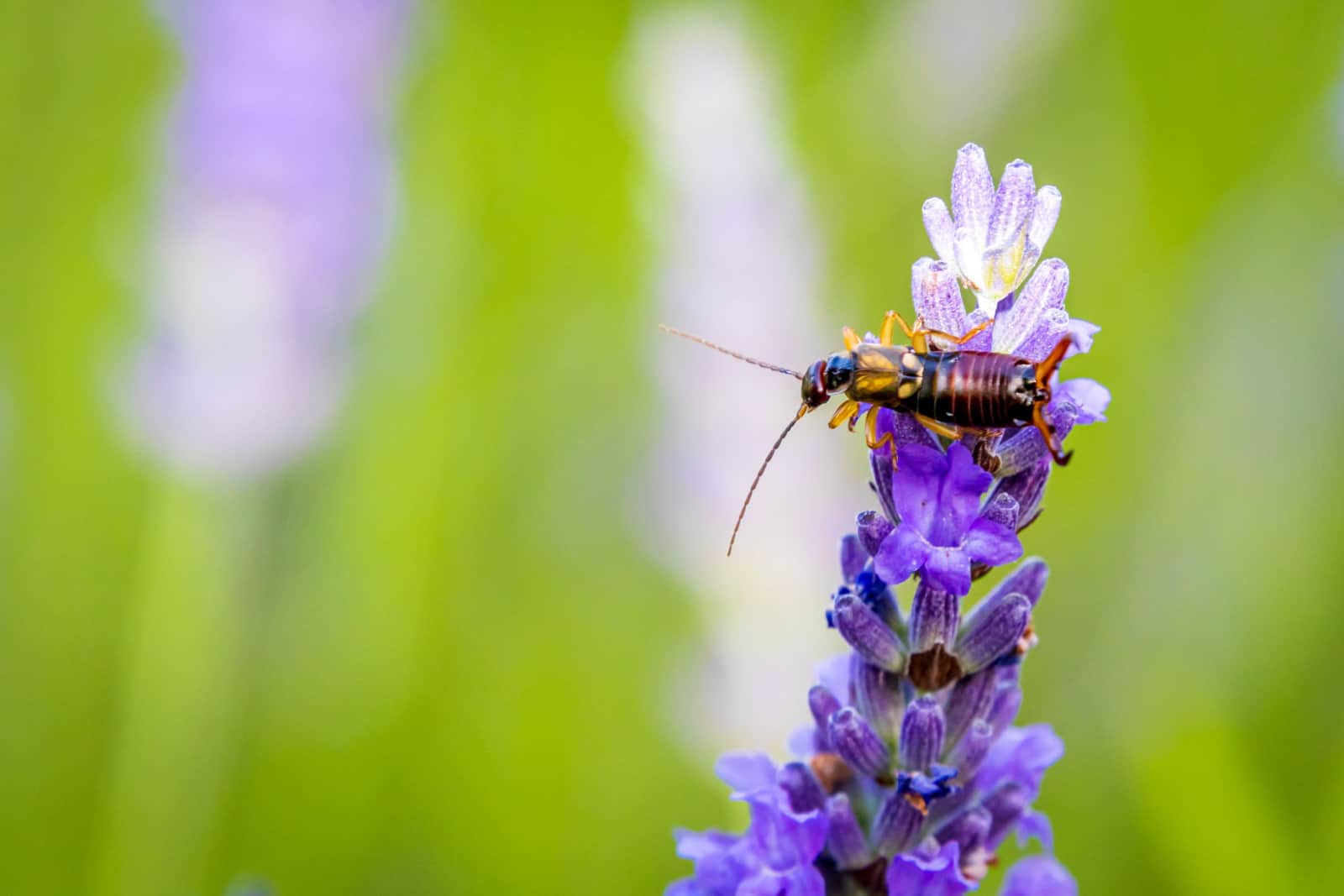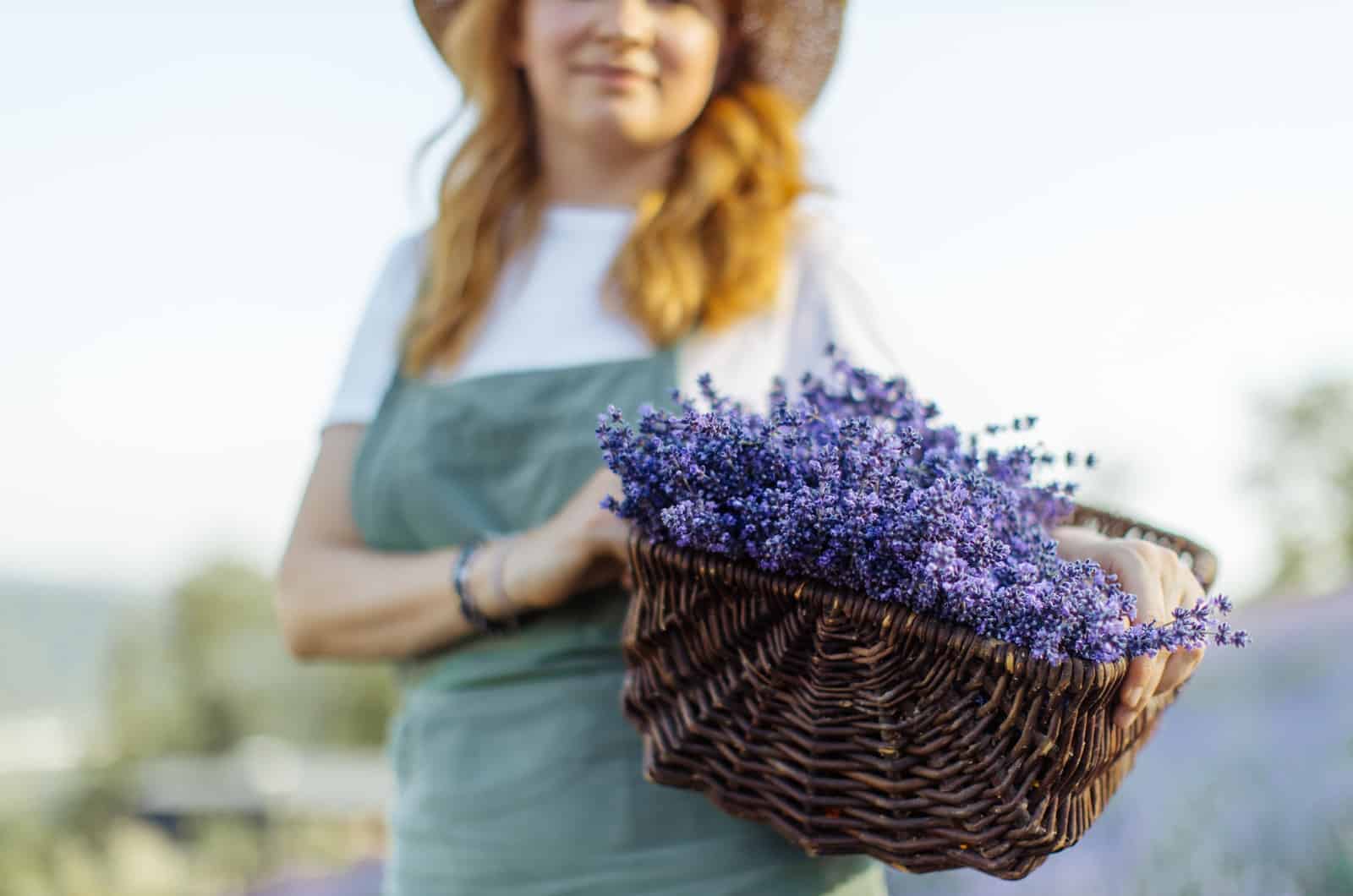Lavender is a fragrant and drought-tolerant plant suitable for any garden. They generally do better off in drier climates like the Mediterranean, but you can grow them successfully just about anywhere if you know how.
And that’s why we’re here today; we’ll talk about how to grow lavender anywhere you want, how to plant these scented herbs, and discuss their requirements so that you can provide them with the best possible care.
One of the things that most growers love about these plants is that they’re fairly disease and pest-resistant. However, they can succumb to these issues, so we’ll talk about how to prevent and deal with them.
Finally, there are many lavender varieties out there, and we’ll mention some of the most popular ones you can add to your garden.
Before we get to all that, let’s learn some general specifics about these plants:
[table id=630 /]
How To Grow Lavender Varieties
When growing lavender, we need to pay attention to the location we choose for it, spacing, and the hardiness zone we are growing it in.
We’re used to seeing these scented plants all over the Mediterranean region and climates with similar conditions, but did you know that you can grow lavender in Florida?
Of course, you need to plant a suitable variety (French lavender cultivars are the best) in full sun and at least three feet apart, as well as prune them to increase air circulation.
These gardening tips work for any region, not just a humid one. Before growing and planting lavender, you first need to choose a variety suitable for your region.
Choosing The Right Type Of Lavender
There are many lavender species to choose from, but the most famous are lavandin and English, Spanish, and French lavenders.
They come in various shades, from deep purple to blue, pink, and even white. Yes, there are white lavender varieties you can grow together with your traditional violet ones to create a nice contrast in your garden!
But it’s not just color that differs these species; it’s their hardiness as well.
English Lavender (Lavandula Angustifolia)
This lavender type is the hardiest one, and you can grow it in USDA zones 5-9. It has many cultivars, but the most popular are Hidcote and Munstead.
Both varieties bloom in late spring or early summer, although the Munstead flower spikes appear a bit earlier.
Hidcote typically blossoms once per season, while Munstead boasts the second flush of purple-blue flowers after you deadhead or harvest the first ones.
Spanish Lavender (Lavandula Stoechas)
The care guide for Spanish lavender includes all the things you can find in any lavender plant care guide, although it is less hardy than lavandin and English lavender.
This species can tolerate growing conditions in zones 6-11, but it thrives in zone 8 and above. It has many famous white and purple cultivars, the most popular of which are Anouk and Ballerina.
It is an excellent addition to any herb garden because it produces blossoms three times a year in climates with mild winters (from late spring to late summer or early fall).
French Lavender (Lavandula Dentata)
French lavender is a perennial in zones 8-11, which makes it perfect for hotter regions. It also tolerates humid climates better than other species, so you can grow it in Georgia and Florida.
Its famous cultivar, Royal Crown, will produce lavender flowers all year long if you keep it in warm temperatures and follow its care guide.
Lavandin (Lavandula x Intermedia)
Lavandin is a hybrid of English lavender and Portuguese lavender (Lavandula latifolia).
It is almost as hardy as English lavender, but it bears more blossoms that are more prominent.
Growers adore its cultivars Phenomenal, Grosso, and Provence due to their incredible fragrance, ample blossoms, and hardiness.
Planting Lavender
The best time to plant lavender is in early spring since the soil is warm enough and there are many healthy species waiting in nurseries and garden centers.
After choosing the variety, you need to find the best location. Choose a site with at least six hours of light a day.
Furthermore, lavender needs well-drained soil, so you should amend it with some compost, sand, perlite, perlite, bark, etc. These ingredients add organic matter to the soil and ensure good drainage and aeration, which prevents the growing medium from getting waterlogged.
It is essential to plant these fragrant varieties at least three feet apart because they require good air circulation. This will help prevent the development of fungal diseases.
However, if you want to create a hedge, you can plant them one foot apart, but in that case you’ll have to be careful when watering them so as not to wet the lower leaves (or upper ones).
You can also plant your lavender in a container with a special potting mix, or in a raised bed. The best planter for this drought-tolerant plant is a terracotta pot with holes in the bottom because it ensures optimal drainage.
In this case, you should use a potting mix with a lot of coarse material to prevent overwatering.
Finally, after planting your lavender either in the ground or in a container, you can mulch it with inorganic material (gravel, rocks, pebbles) to suppress weed growth.
Lavender Plant Care
Understanding the lavender growing stages is crucial for proper care since this plant has different needs at different phases.
For instance, you should water young plants regularly during their first year, and less frequently the next year (2-4 times per month during the hot periods).
Lavender also requires plenty of sunlight, quick-draining mediums, and pruning, and we’ll discuss all these needs in the following sections.
Light Requirements
Lavender requires at least six hours of light each day to produce many flower spikes, although 8-10 hours is ideal.
Of course, some shade is fine if you live in a particularly hot and dry climate, but too much will lead to legginess, pale leaves, slow growth, and a lack of flowers.
Also, not enough direct sunlight will affect the production of essential oils, making your plants less fragrant.
Water And Humidity
Lavender is a drought-tolerant plant, so you shouldn’t set up a fixed watering schedule as that may lead to overwatering and root rot.
Instead, water them in the morning every 1-2 weeks, depending on the temperature, their light exposure, and the type of soil (if the growing medium is heavier, you should add less moisture).
Morning irrigation is the best as it allows the foliage to dry out and prevent the development and spread of fungal infections.
If you’ve planted your lavender in a pot, you should wait until the potting soil is nearly dry before watering it.
Of course, bad things can always happen, which is why you should recognize the symptoms of overwatered lavender in order to save it on time. They include discolored leaves, droopiness, stunted growth, an unpleasant smell, etc.
Humidity
Lavender can tolerate low humidity levels quite well; it’s high air moisture that’s the problem.
High humidity can lead to fungal diseases such as powdery mildew, so you should provide your plants with good air circulation.
Plant your lavender in a full sun location to dry out the leaves, ensure spacing of at least 3 feet (or 1 foot for hedges), and prune for more airflow.
Temperature
Lavender is native to hotter climates and can flourish in temperatures between 65-85°F (or even up to 95°F if you tend to them properly).
On the other hand, they dread freezing temperatures, which is why you should protect them over winter (unless you grow them in their preferred USDA zones).
If you planted your lavender in a container, you can take it inside. You can also plant them in a location where they’ll be sheltered from the wind, mulch them to keep their root systems warm, or cover them with frost cloth if you live in particularly cold climates.
Finally, avoid placing lavender in areas with sudden temperature swings, such as close to AC vents, heaters, old windows inside, or unsheltered locations outside.
Soil And Fertilizer
Lavender thrives in somewhat dry, mildly fertile, and alkaline soils with a soil pH level of up to 7.5.
If your native substrate is too heavy, you can add some horticultural sand or grit, compost, pebbles, etc., to improve its drainage.
And if that doesn’t help, make a raised bed and plant your lavender in it so that the root systems aren’t constantly in the water.
When planting lavender in containers, use high-quality potting soil and amend it with some perlite, pumice, bark, or other well-draining materials.
Fertilizer
The good news about lavender plants is that they don’t require fertilizers. Sure, you can add a bit of compost in early spring, but that’s about it.
Remember, these plants love poorer soils, and if you add too much organic matter to their growing medium it will affect their fragrance, accumulation of essential oils, and cause a lack of flower spikes.
Lavender Propagation
If you want to make a lavender hedge, but don’t want to spend more money, you can always propagate your old plants.
You can multiply lavender from seeds, cuttings, and by division, and we’ll discuss all these methods in our guides below.
Propagating Lavender From Seeds
Growing lavender from seeds is probably the most complex technique, but we’ll still discuss it briefly so that your seeds don’t go to waste.
Step 1. Prepare a seed-starting mix in a nursery tray and hydrate it before sowing.
Step 2. Plant the lavender seeds and sprinkle them with the mixture. Don’t bury the seeds as it may hinder germination.
Step 3. Place the nursery tray in a warm location (or on a heating mat) and cover it with a humidity dome or a plastic bag.
* At this stage, you don’t have to expose the seeds to light as they don’t have any leaves. However, as the foliage begins to develop, gradually move the plant to a brighter area.
Step 4. Water (or mist) the seed-starting mix when it begins to dry out.
Step 5. Once the root system establishes and the plants have put on so much new growth you can easily work with them, transplant them to larger pots.
Step 6. Move your lavender outside and plant it in the ground (or leave it in the container if you prefer) after the last frost date passes.
Propagating Lavender From Cuttings
This method of multiplying lavender plants is fairly easy, although it does require a bit more of your attention.
Step 1. Fill a nursery tray or small pot with pre-moistened, well-drained soil. (This method allows better hydration, but you don’t have to do it if you don’t have the time or have forgotten).
Step 2. Take healthy softwood cuttings (as they develop roots faster) and remove the bottom leaves to prevent them from rotting. Try to take a stem without a flower or remove the blossom before planting the cutting.
Step 3. Use some rooting hormone for faster propagating (although it’s not necessary), and plant the cutting in the growing medium.
Step 4. Cover the stems with a plastic bag or humidity dome. If they don’t have holes, you should remove them from time to time to allow your plants to breathe.
Step 5. Expose your cuttings to bright indirect light, keep them in a warm place, and moisten the growing medium whenever it begins to dry.
Propagating Lavender By Division
Dividing lavender is one of the best multiplying methods as you end up with two established plants.
Step 1. If your lavender has at least two woody stems that divide it in bunches, you can divide it. First, you need to take it out of its container.
Step 2. Then, gently grab the stems and carefully start dividing the roots, starting from the top.
Step 3. Plant the divided lavenders in separate pots as soon as you divide them. You can also plant them in the ground, but do it in early spring when temperatures are a bit warmer.
Step 4. Expose the plants to bright light, keep them hydrated, and that’s it!
Repotting
Lavender doesn’t grow that fast, but they still require occasional repotting, especially if they double in size.
The best time to move your lavender is in spring when they start putting on new growth because they’ll be able to recover before dormancy.
You should also keep them hydrated before repotting, and do so on an overcast day to reduce transplant shock.
Choose a terracotta pot 1-2 sizes larger than the previous one and make sure it has drainage holes in the bottom.
Put some potting mix in it, place your lavender, and fill it with more medium.
Water your lavender, move it to a sunny location, and you’re done!
Prune Lavender
The gray-green foliage of lavender is extremely attractive, but you should still prune it to prolong the lifespan of your plant and keep it neat and tidy.
Deadhead the spent flower spikes to make room for new ones. If you have a hardy lavender variety, you can remove about one-third of its growth in the fall, but if you own a lavender that prefers mild winters, you should wait until spring (or late summer) to do the heavy pruning.
You can even trim your lavender into a topiary, and the best part is that lavender tree care is the same as for the regular plant.
Common Issues With Lavender Plants
Even though we use lavender to repel pests from other plants, they can still get infested with certain pests, especially if you don’t care for them properly.
This can open a channel to diseases and really put your plant in danger. But how can you prevent and deal with it?
Pests
The most common pests that attack lavender are aphids, whiteflies, shabs, etc. If you overwater or overfertilize your plant, or keep it in inadequate lighting, it will become more susceptible to infestations.
Therefore, to avoid pest issues, you must tend to this plant properly.
And if it does get infected, you can always use some horticultural oils or similar insecticides to get rid of them.
Diseases
The most common disease that can afflict your lavender plants is root rot. Overwatering is the only cause of this issue, although heavy soils and pots with poor drainage will increase the risk.
Therefore, water your lavender plants every 1-2 weeks or when the soil in the planter somewhat dries out
If you still notice that your plant is droopy, doesn’t grow, and smells unpleasant, you should examine its roots.
If they’re soft and dark, you should remove them, spray some fungicide on the remaining parts to prevent the return of this disease, and repot your lavender in a new substrate and clean container.
FAQ
How do you harvest lavender?
When harvesting lavender, wait until the flower spikes appear and then cut them before their blossoms open up.
Of course, knowing when different types of lavender bloom is useful, as you’ll know when to expect them.
What are the common uses of lavender?
The most common uses of lavender are in perfumes, soaps, sachets, potpourris, scented candles, bouquets, etc.
We can also find them as a part of Herbes de Provence mixes, or use the dried flowers as a pest repellent. Simply hang them upside down to dry out and work their magic.
Lavender flowers attract bees, bumblebees, butterflies, etc., which is why many growers plant them in their pollinator gardens.
You can use this herb in cooking, as a hedge, or to frame your walkways and patios; the options are endless!
How long do lavenders grow for?
Lavender plants usually take about three years to fully mature, although they will start flowering in their first year.
However, you should snip off these flowers to direct the plant’s energy toward root development and vegetative growth.
Final Thoughts
Learning how to grow lavender won’t take much time. First you need to choose a variety suitable for your climate, then pick the best location and plant it.
Afterwards, you need to ensure it gets full sun, has well-drained soil, and a bit of water and some nutrients to support its growth.
You also need to prune this plant in order to prevent it from becoming woody, prolong its lifespan, and make room for its beautiful flowers.
Unfortunately, we may get carried away and do harm to our plant, which is why we discussed the most common issues that can go wrong with it, such as pest infestations and disease infections.
We included helpful ways of dealing with them so that you can save your plant in time.
Until next time!

